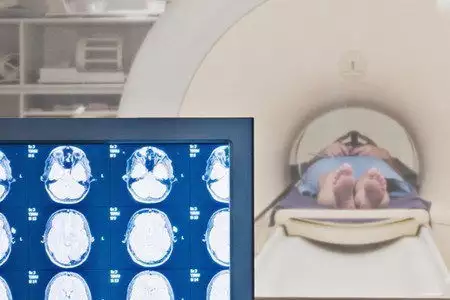Today, psychiatry uses additional methods in addition to observation, physical examination and psychological examination, which mainly allow the exclusion of organic brain damage.
The basis for diagnosis by the psychiatrist is still the collection of a thorough and insightful history with the patient and his/her family.
Not only changes in the patient's mental state are then taken into account, but also past neurological diseases, general health and childhood data. This makes it possible to obtain a consistent clinical picture.
During the mental status examination, the doctor assesses:
- behaviour and psychomotor drive
- mood
- consciousness and awareness
- attention, memory and orientation to the surroundings and the situation as regards oneself
- speech, whether there is talkativeness, aphasia, perseveration or wordiness
- intelligence
- personality
- drive
- sense of mental illness
- disorders of perception, i.e. hallucinations, delusions or sensory hypersensitivity
Neuroradiological tests
Neuroradiological examinations are particularly useful in the diagnosis of organically determined mental disorders. Computed tomography (CT), magnetic resonance (MR), positron emission tomography (PET) and electroencephalography (EEG) are mainly used for these purposes.
Electroencephalographic examination
During an EEG examination, the bioelectrical activity of the brain, i.e. the alternating field caused by currents flowing in the extracellular environment, is recorded using electrodes placed on the patient's head. These currents are generated by the activity of the neurons of the cerebral cortex. The recording of a single electrode consists of the sum of thousands of individual postsynaptic potentials.

photo: ojoimages
Interpretation of the EEG involves assessing the morphology, symmetry, amplitude and frequency of specific graphic elements obtained in the recording of the bioelectrical activity of the brain. Any major change is a sign of pathology, and the test itself is helpful in the diagnosis of mental illnesses resulting from inflammation of the central nervous system, encephalopathy, focal damage to the central nervous system or nonconvulsive status epilepticus.
Computed tomography
Examination with a CT scanner allows visualisation of cranial structures, fluid spaces and the brain tissue itself. The principle of CT is to digitally record the values of X-ray absorption by the tissue examined. An image of the organ under examination is obtained in different layers and planes.









